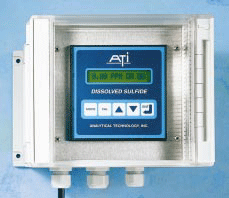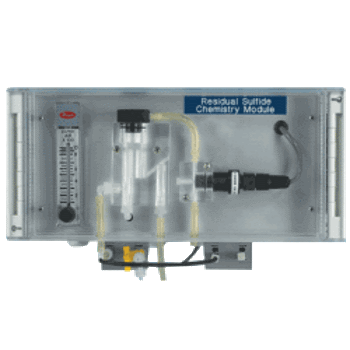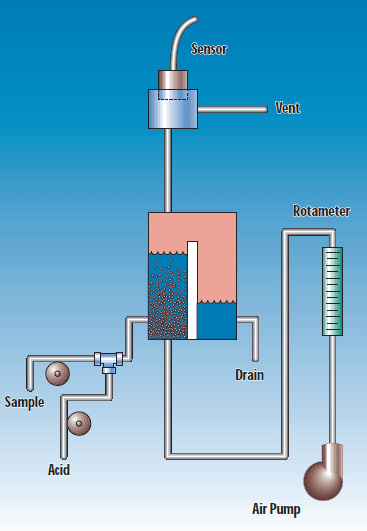
Sulfides can be found naturally in well water and can build up in wastewater collection systems due to anaerobic conditions that frequently occur. They are also used in mercury removal processes and are frequently found in tanning wastes. In drinking water systems, sulfides cause taste and odor problems. In wastewater systems, they can cause damage to concrete structures in collection systems and contribute to odor problems in treatment facilities.

Measurement of dissolved sulfide concentrations has been done primarily by the use of analyzers employing selective ion electrodes (SIE) for sensing. While providing adequate sensitivity, SIE based systems require frequent zero and span adjustments to maintain measurement accuracy. Because of this, most SIE based monitoring systems are relatively expensive and require frequent service.

ATI’s Model A15/81 Dissolved Sulfide Monitor provides an improved method for measuring sulfides in solution. Rather than using an SIE sensor, the A15/81 employs a polarographic H2S gas sensor that is isolated from the sample. The result is a system that can operate continuously on many types of water and wastewater streams with minimal maintenance and adjustment.
The A15/81Monitor takes a unique approach to the measurement of sulfide in solution. In operation, a small amount of sample is pumped into the system and mixed with acid. In acidic solution, hydrosulfide and sulfide ions (HS- and S-2 ) are converted to hydrogen sulfide. The mixed sample flows into a special chamber where the hydrogen sulfide is stripped from the sample. A sensor located in the gas stream measures the released H2S concentration and displays the results in terms of equivalent sulfide ion concentration in mg/l.
Because sulfide measurements are often made in samples of poor quality, fouling of the analytical system has been a major concern. An important feature of the A15/81 system is the fact that the sensor never comes in contact with the sample. Only the gas stream containing the stripped H2S reaches the sensor. The result is a system that will continue to function, regardless of the quality of the sample. The only requirement is that large particulate be strained from the sample. The analytical system will easily pass particulate as large as 100 microns, so only course screening is required.


